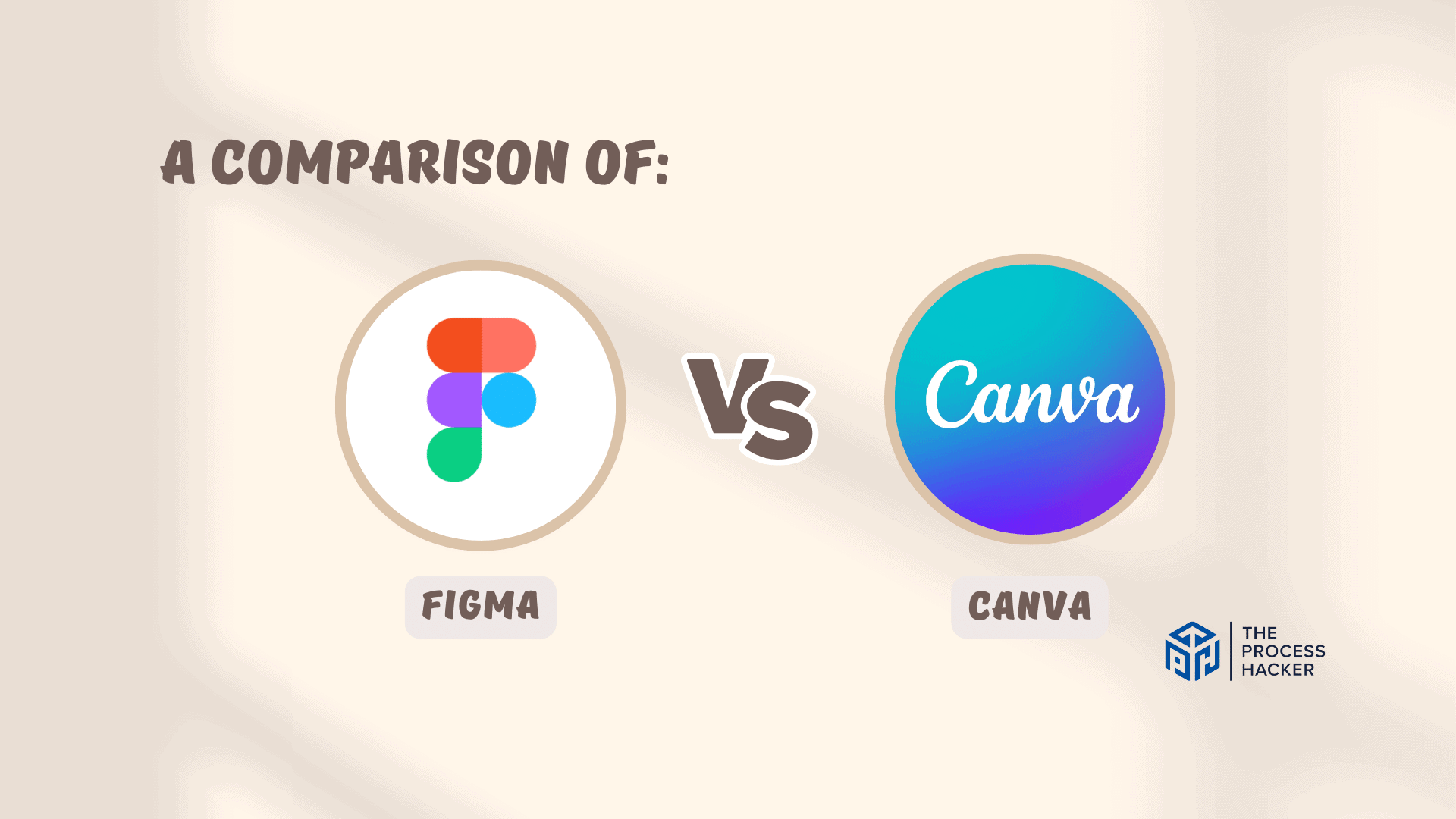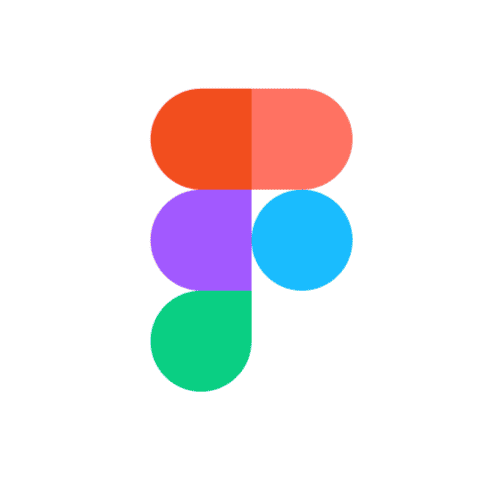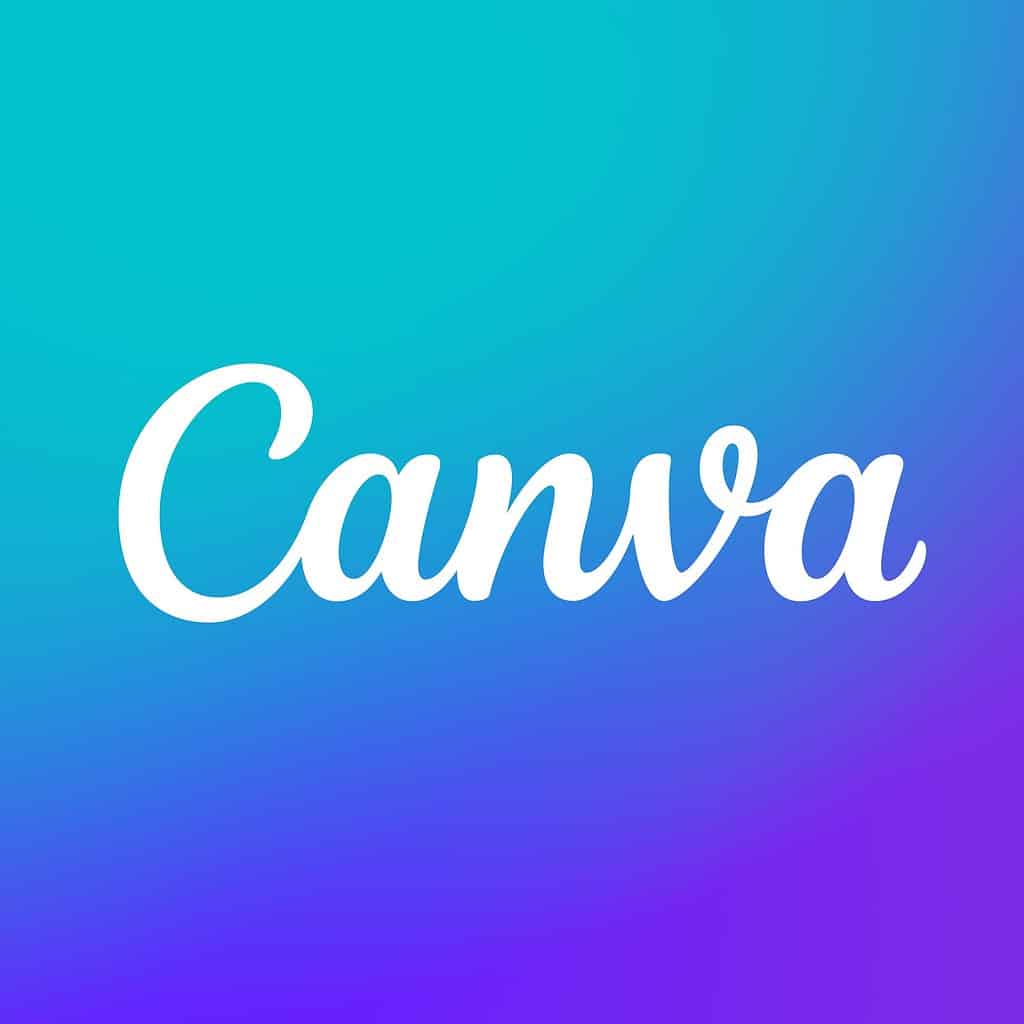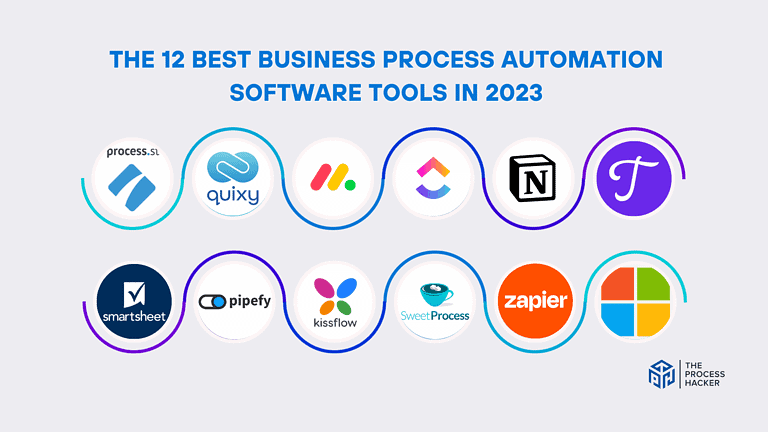Figma vs Canva: Which of These Design Tools is Better?
Want to know which design tool is better for your design needs? Look no further!
With so many design tools out there, it can be overwhelming trying to figure out which one is the best fit for you. But don’t worry, we’ve got you covered!
If you purchase through our partner links, we get paid for the referral at no additional cost to you! For more information, visit my disclosure page.
In this article, you will learn all the key comparative details between Figma and Canva – their features, pricing, user-friendliness, and more. You’ll also learn how each tool can benefit your graphic design needs.
So why wait? Read this comprehensive review now to learn everything you need to know about these two top design tools!
Let us help you find the perfect fit for all your graphic design needs with our unbiased comparison of Canva vs Figma.
Brief Overview: Canva vs Figma
First, I’ll give you a quick overview of Figma and Canva:
Figma
Figma is a web-based interface design tool that facilitates collaborative design projects. It’s renowned for its real-time collaboration features, allowing multiple users to work on the same project simultaneously.
Its vector graphics editor and prototyping capabilities make it a favorite among professional designers and teams.
Key Selling Points:
- Real-time collaboration for team projects
- Vector graphics editor and drawing tools for detailed design work
- Prototyping tools for interactive designs
- Plugin support for enhanced functionality
- Cloud-based, ensuring accessibility from anywhere
Canva
Canva is a user-friendly graphic design tool known for its simplicity and vast library of templates. Ideal for beginners and non-designers, it offers a drag-and-drop interface with a wide range of templates for social media graphics, presentations, flyers, and more.
It emphasizes ease of use and quick, beautiful results.
Key Selling Points:
- Intuitive drag-and-drop interface
- Extensive library of design templates
- Great for quick, professional-looking designs
- Wide range of stock images and graphics
- Suitable for beginners and non-professional designers
Quick Verdict: Canva vs Figma
It shines when you need multiple people working together seamlessly on complex projects. Imagine a tool where real-time collaboration isn’t just a feature; it’s a game-changer. Here, designers and teams come together, merging creativity and efficiency.
Figma’s strength lies in its advanced vector editing capabilities, prototyping capabilities, and plugin support, making it indispensable for detailed and dynamic design projects. It’s not just a design tool; it’s a collaborative platform for professional-grade projects where details and team input matter.
Picture a world where beautiful graphics are just a few clicks away, even if you’re not a trained designer. Canva’s drag-and-drop interface, combined with an extensive library of templates, makes it perfect for creating eye-catching designs quickly.
Whether you’re whipping up a social media post, a presentation, or a flyer, Canva ensures your work looks professional with minimal time investment. It’s designed for those who want to create, share, and impress without the complexities of traditional design tools.
Product Overview: Canva vs Figma
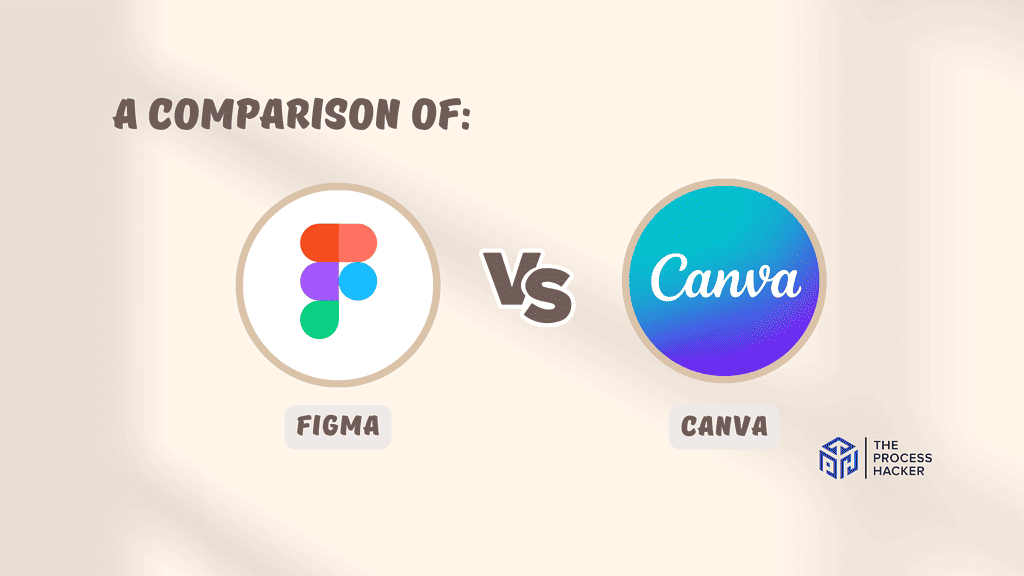
What is it?
Figma is an interface design tool that facilitates team collaboration with features like real-time photo editing tools and commenting. It’s a comprehensive platform for creating, prototyping, and handing off designs, boasting robust vector graphics capabilities and extensive plugin options.
Canva is a graphic design platform that allows quick visual content creation using pre-made templates and a drag-and-drop interface. It’s designed to help you produce anything from social media graphics to print materials without prior design knowledge.
Who is it for?
Figma serves design professionals who prioritize precision and collaboration in their workflow. It appeals to UI/UX designers, product teams, and freelancers who require a versatile tool to take a project from concept to completion.
Canva is tailored for entrepreneurs, marketers, educators, and anyone else who needs attractive visuals without a steep learning curve. It’s perfect for creating professional-looking designs efficiently and easily.
What makes it special?
Figma stands out with its advanced collaborative features and flexibility throughout the design process. Its uniqueness lies in facilitating multiple designers to work on the same project simultaneously while maintaining a high degree of design integrity and consistency.
Canva differentiates itself with user-friendliness and accessibility. Its special appeal comes from quickly turning ideas into polished designs through a vast library of templates and easy-to-use design elements.
What does it do?
Figma helps you build user interfaces from the ground up with vector tools and responsive design features. It also allows you to prototype interactions and transitions, share prototypes, and gather feedback directly on your designs.
Canva provides a platform where you can select a template, customize it with text, images, and icons, and get your design ready to publish within minutes. It simplifies the design process, making it accessible to create visually compelling content without any technical hurdles.
Quick Comparison: Figma vs Canva
| Key Features | Figma | Canva |
|---|---|---|
| #1) Pricing | Winner | |
| #2) Free Plan | Winner | |
| #3) Design & Functionality | Tie | Tie |
| #4) Drawing Tools | Winner | |
| #5) Template Libraries | Tie | Tie |
| #6) Content Planner | Winner | |
| #7) Drag-and-Drop Interface | Tie | Tie |
| #8) Collaborative Options | Winner | |
| #9) Prototyping Tool | Winner | |
| #10) Brand Kit and Own Design Elements | Winner | |
| Overall | For collaboration | For design |
Feature Comparison: Figma vs Canva
Let’s compare the features of these design tools so you can make the right decision for you and your business.
#1) Pricing
Figma offers a flexible pricing model ideal for individual professionals and larger teams. It splits its services into two main categories: Figma for individual designers and FigJam for businesses. The starting price for Figma’s Professional Plan is $12 per editor per month, and it also provides Organization and Enterprise plans for more extensive needs.
Conversely, Canva introduces Canva Pro for individuals and Canva for Teams for groups. The pricing begins at $14.99 per month for a single person and increases with the addition of more team members.
When you compare the starting prices, Figma offers a more budget-friendly option, especially for professionals who require advanced design and collaboration tools. While Canva provides a wealth of resources and templates, the slightly higher price point may be a consideration for individuals and small teams on a tight budget.
Verdict: For pricing, Figma takes the lead with its lower starting cost and flexible plans that cater to various professional needs.
#2) Free Plan
Figma provides a free plan with access to the Figma editor, allowing you to collaborate on up to three design files. You also get unlimited personal drafts and basic design inspection without spending a dime. This offer suits those starting in design or working on small projects.
In contrast, Canva extends its generosity with a comprehensive free tier, offering many templates and AI-assisted writing and design tools. For educational institutions, Canva provides several Pro features at no cost to teachers, schools, and districts, broadening its appeal.
Looking at the breadth and depth of offerings within the free plans, Canva stands out by delivering various resources and tools to support a wider audience, including educators. The value packed into Canva’s free version is especially valuable for non-designers who must create professional-looking designs quickly and efficiently.
Verdict: For the free plan, Canva edges out with its generous feature set, which is accessible to beginners and educational professionals.
#3) Design & Functionality
Figma excels in its vector-based design capabilities, offering a robust platform for creating detailed product mockups. Its collaborative features are compelling for teams that require real-time teamwork and flexibility when customizing designs.
On the contrary, Canva targets those who wish to produce simple graphics swiftly and effortlessly. With its intuitive drag-and-drop interface, it’s tailored for beginners and non-designers. Canva provides a wide range of ready-to-use templates, making the design process quicker for most basic tasks.
When deciding on superiority in design and functionality, your personal design needs take center stage. Figma will serve you better if you’re looking for a high-fidelity design with advanced collaboration tools. However, if speed and simplicity are your priorities, Canva’s simple design approach will likely be more beneficial.
Verdict: Figma is the go-to for professional designers for design and functionality, while Canva wins for those seeking ease and speed in graphic creation.
#4) Drawing Tools
Figma shines as a vector graphics editor equipped with precision tools that let you easily manipulate paths, create complex shapes, and manage intricate designs. If you’re venturing into UI/UX design or require scalable graphics, Figma offers the sophisticated features necessary to refine every curve and line.
In contrast, Canva does not specialize in sophisticated drawing tools. While you can work with vectors to a certain extent, it doesn’t provide the same level of detailed control as Figma. Canva is optimized for quick modifications and simple drawings, making it less suited for tasks that demand advanced vector manipulation.
If your work demands high-precision vector editing, Figma is better. Figma’s comprehensive toolkit supports an advanced design process, while Canva prioritizes speed and simplicity for drawing over technical depth.
Verdict: Figma is the clear winner for drawing tools due to its specialized tools tailored for detailed and complex designs.
#5) Template Libraries
Figma offers diverse templates, but its focus leans more toward UI/UX design. These templates are perfect if you’re working on app interfaces or web design projects, offering a range of wireframes and UI kits.
Canva, in contrast, shines with its vast library of templates for a variety of purposes, from social media platforms for graphics to presentations. The emphasis is on accessibility and catering to a wide range of design needs, even for those without much design experience.
When evaluating template libraries, Canva takes the lead for its sheer variety and user-friendliness, making it ideal for quick, diverse designs. While offering valuable resources, Figma specializes in UI/UX projects. Your choice should align with the specific type of design tasks you often tackle.
Verdict: For template libraries, Canva is the superior choice for a wide range of general design tasks, while Figma excels in specialized UI/UX design templates.
#6) Social Media Posts & Content Planner
Figma doesn’t have a built-in content planner. Still, its robust design system and collaboration tools allow you to customize templates to create detailed project timelines, task boards, and content calendars. This approach requires more manual setup but offers flexibility for integrating into your workflow.
On the other hand, Canva introduced a content planner feature that’s aimed at making scheduling and publishing social media content straightforward. You can design your posts within Canva and set dates for them to go live, streamlining your social media management process.
With its dedicated content planner, Canva has the upper hand in managing and scheduling content. This feature is a boon if you want to centralize your social media campaign creation and deployment directly within the design tool.
Verdict: Canva is the top choice for content planning due to its intuitive, built-in scheduling capabilities that complement its design functions.
#7) Drag-and-Drop Interface
Figma offers a drag-and-drop interface that caters to more advanced users looking for detailed control over their design elements. While it is user-friendly, there’s a steeper learning curve involved, which provides a richer experience once you get the hang of its functionalities.
Canva, in contrast, prides itself on its simplicity and ease of use, primarily due to its drag-and-drop interface. This feature makes it exceptionally convenient to move elements around, edit photos, and customize templates without any design background.
Deciding on the superior drag-and-drop interface depends on your level of expertise and what you’re trying to achieve. If you desire finer control over design elements, Figma is your go-to, and don’t mind a slight learning curve. However, Canva’s simple approach is hard to beat for simplicity and immediate usability.
Verdict: For a drag-and-drop interface, it’s a close call, but Canva edges out those who prioritize ease and speed, while Figma is the choice for designers who prefer depth and detail in their work.
#8) Collaborative Options
Figma excels in real-time collaboration, allowing multiple people to work on the same project simultaneously. You can see where others are working, comment directly on designs, and even observe changes as they happen, making teamwork seamless and interactive.
Canva also provides collaboration features, letting you share designs with others and work on them together. However, these interactions tend to be more asynchronous, meaning you and your colleagues don’t necessarily have to be online at the same time to contribute to the development of the design.
Regarding collaborative options, Figma stands out for teams requiring real-time, synchronous collaboration, offering a more dynamic and integrated way to build designs. Canva, while still a strong option for collaboration, is better suited for scenarios where immediate, simultaneous interaction isn’t as critical.
Verdict: Figma is the better choice for collaborative options, particularly for teams needing to work together in real-time and wanting a more connected design experience.
#9) Prototyping Tool
Figma’s prototyping capabilities allow you to create interactive and high-fidelity prototypes within the same environment where you design. This feature lets you link different pages and simulate the user experience without switching to another tool.
Canva doesn’t offer a dedicated prototyping feature like Figma. While you can create individual interactive elements such as buttons or links to external sites, the functionality for creating a fully functional prototype to simulate an app or web experience isn’t part of Canva’s feature set.
Figma unquestionably has the advantage when evaluating prototyping tools due to its comprehensive suite of interactive design features. This makes it the go-to for anyone needing to create detailed and functional prototypes as part of their design process.
Verdict: Figma is the clear winner for prototyping capabilities, providing an extensive range of features for creating dynamic and realistic prototypes.
#10) Brand Kit & Own Design Elements
Figma’s approach to brand kits and custom design elements centers on advanced customization. It allows you to build and maintain a detailed brand identity with intricate design systems, which is ideal for teams needing cohesive brand application across various projects.
Canva, however, shines in its simplicity and accessibility in creating brand kits. Its platform enables you to easily incorporate brand colors, fonts, and logos, making it a favorite for quick, consistent brand application in designs without requiring extensive design skills.
While Figma offers robust and detailed options for brand kits and design elements, Canva’s user-friendly and accessible approach makes it stand out for those who value simplicity and efficiency in brand consistency. Canva is especially beneficial if you prefer the ease of use and quick results in applying brand elements.
Verdict: Brand Kit and Own Design Elements, Canva excels with its simplicity and user-friendly interface, making it ideal for efficient and consistent brand application in designs.
Final Thoughts on Figma vs Canva
In my experience, both Figma and Canva serve distinct purposes in the design landscape!
Figma excels in professional environments where collaboration and intricate design workflows are crucial. Its advanced features, such as real-time collaboration and detailed prototyping tools, make it a standout choice for teams working on complex projects, particularly in UI/UX design.
Canva, on the other hand, is a beacon of accessibility and ease in design. It’s an excellent tool if you’re looking for quick, visually appealing results without a steep learning curve. Its strength lies in its vast template library and user-friendly interface, making it ideal for creating stunning graphics, especially for social media posts, presentations, and small-scale marketing materials.
Your choice should align with your specific needs:
- Figma: If you’re part of a team that requires collaborative design work with a focus on advanced features, Figma is the way to go.
- Canva: If your priority is creating attractive designs swiftly and with minimal hassle, Canva is your best bet.
Choose Figma for collaborative, professional design work and Canva for user-friendly, efficient design creation.

